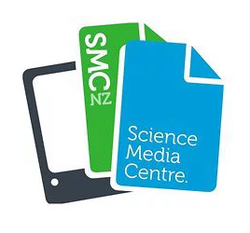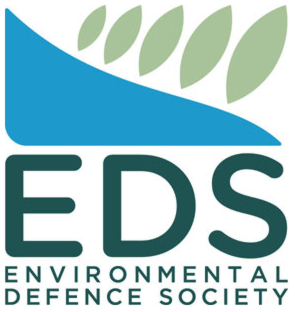SMC Science Deadline: 3-way IVF, plate tectonics and animating your science
Issue 314, 05 Feb 2015
NEW FROM THE SMC
In the news: Kiwi scientists discover how Earth's plates move
In the news: Science and the media on Radio NZ’s ‘The Panel’
NIn the news: NZ link to retina research – Dominion Post
Expert reaction: UK mitochondrial donation vote
Expert reaction: Size matters in language evolution
The SMC network
Expert reaction: Commons vote on mitochondrial donation
Expert encounter: in conversation with Professor Anne Glover CBE FRSE FASM
The ethics of ‘big data’ – Nuffield Council on Bioethics report launch
Australian
SMC
Expert reaction: UK MPs vote to allow
mitochondrial DNA transfer, labelled ‘three-person IVF’
by the press
Background briefing: The science behind the death penalty
Media training for
scientists
Upcoming Christchurchworkshop
SLIPPERY
PACIFIC PLATE
New Zealand researchers
have developed the clearest picture yet of what happens at
the base of tectonic plates and how they move across
Earth’s surface.
For the first time, an international team of scientists based out of Wellington, has been able to see 100 kilometres under the earth’s surface and underneath the Pacific and Australian tectonic plates. The study was published inNature today.
The scientists’ findings have uncovered what appears to be a thin layer of soft or molten rock at the base of the Pacific plate — some 100 kilometres underground — which allows the plates to slide and move.
“The idea that Earth’s surface consists of a mosaic of moving plates is a well-established scientific paradigm, but it had never been clear about what actually moves the plates around,” says Victoria University’s Professor Tim Stern in a media release.
They set up underground dynamite explosions across the Wellington region to create controlled seismic shockwaves, which they then used for getting images of Earth's underlayer.
“By generating our own seismic waves using higher frequency dynamite shots we were able to see how they became modified as they passed through different layers in the earth," Prof Stern explains. "This, along with some new techniques in seismic reflection processing, allowed us to obtain the most detailed image yet of an oceanic tectonic plate.”
Read the full story with media coverage on the
Science Media Centre website.
Image credit:
Nature Publishing
Group
ANIMATION
WORKSHOP
Applications are filling fast
for our Science Media SAVVY workshop on science
animations.
The Wellington workshop (an Auckland workshop will be held at a later date) would suit scientists or science communicators looking to build up their science animation skills and toolbox.
Participants will need to
bring an abstract of an idea to workshop into an animated
video script, will learn about the animation writing and
production process, and leave with a script and toolkit for
producing their own animated videos.
This workshop is
free to attend, but is limited to 20
places. This is a competitive application process -
the best applicants will be selected based on the animation
concepts outlined in the application form.
The workshop
includes the Science Animation Showdown, a
competition allowing attendees to pitch their animation
project idea to win funding to get it into production.
PLUS: Up to three videos will be funded with the
support of microbiologist and former PM's Science
Communicator's Prize winner, Dr Siouxsie Wiles. Details and
application form available at the link
below.
APPLY HERE
UK
VOTES FOR IVF LAW
International media
has reported on a UK move to allow couples to use donated
eggs to avoid certain inherited diseases, with headlines
referring to 'three parent babies,' but is that really the
case?
In a free vote, UK MPs voted in favour of
allowing 'mitochondrial donation', a process which allows
women carrying defective DNA in their mitochondria (small
energy-generating structures in cells) to have children
without passing on the mutations. Mitochondrial diseases
arising from defective DNA can lead to brain damage, muscle
wasting, heart failure and blindness.
The technique
approved by the House uses a modified version of IVF
(in-vitro fertilisation) to combine the two parents’ DNA
with the healthy mitochondria of a donor woman. The
DNA-containing nucleus of the patient’s egg is transferred
to an empty or ‘enucleated’, donor egg with healthy
mitochondria.
You can read more about mitochondrial donation, and UK scientists reaction to the announcement on the Science Media Centre website.
Radio New Zealand reports that
New Zealand authorities are unlikely to follow the UK's lead
in the short term, but will monitor the situation
overseas.
THREE'S A CROWD
Much of the
media coverage has referred to children being born with
'three parents'; headlines such as 'UK lawmakers approve '3-parent babies'
law' (CNN) and 'Three-parent babies: Britain votes in favour
of law change' (The Independent), appear
to be the norm in covering the story. But how accurate is
such a description?
While it is technically true that a
child will carry a mix of DNA from three individuals, a
clarification around what constitutes a 'biological parent'
- legally, socially and ethically - wouldn't be amiss in
the discussion.
Professor Malcolm Alison from the The
London School of Medicine and Dentistry gave some context to
the UK SMC:
“Mitochondrial DNA is only 0.1% that of nuclear DNA, so it’s 2.001 parents not 3. Moreover the mitochondrial genes essentially encode for proteins involved in cellular energy production, not obvious traits like hair colour or facial features, and that’s why when they are faulty the diseases are so devastating.”
Similarly, the University of Otago's Professor Wayne Gillette,speaking to Radio New Zealand, expressed doubt about the 'three parent' issue, saying the nature of the tissue donated meant the donor cannot be termed a parent.
QUOTED: RADIO NEW ZEALAND
"When ever you put gear in the water or you make measurements in the Southern Ocean, you’re going to see something new."
Richard O’Driscoll, NIWA scientist, commenting on the research involved in the six-week voyage to Antarctica.
POLICY NEWS &
DEVELOPMENTS
Alcohol use survey: the Ministry of Health’s Alcohol Use 2012/13 report has been published. The report presents the key findings from the 2012/13 New Zealand Health Survey about alcohol use, misuse and alcohol-related harm among New Zealanders aged 15 years and over.
Applications open for Māori health scheme: Applications are now being taken for the Māori Health Development Scheme 2015/16, which includes Hauora Māori Scholarships for those who are studying across a range of fields such as nursing, pharmacy, dentistry, physiotherapy and social work.
NEW FROM
SCIBLOGS
Some of the highlights from this week's Sciblogs posts:
The Economist Index - Eric
Crampton explains how just comparing the price of a Macca's
burger can reveal how the New Zealand dollar is
doing.
The Dismal Science
Conduction in semiconductors: the tennis
ball model - A game of 'who owns the tennis
ball?' prompted Marcus Wilson to come up with his own
analogy on how semiconductors work.
Physics
Stop
Does exercise change your DNA?
Peter Dearden explains what 'epigenetics' is, along with how
and why environmental changes like diet and exercise can
switch our genes on and off.
Southern
Genes
Irradiation of Food and Compulsory
Labelling - Mark Hanna mythbusts food
irradiation and explains its benefits.
Honest
Universe
UPCOMING EVENTS
Please see the SMC Events Calendar for more events and details.
Advanced Materials & Nanotechnology Conference - 8-12 February, Nelson. Focusing on the latest research on advanced materials and nanotechnology.
Back from the Dead? Australia’s Climate Policy - 9 February, Wellington. Motu Public Policy Seminar from Assoc Prof Frank Jotzo (ANU) mapping out the political and economic parameters of Australia’s climate policy.
You, Me & The Sea - 9 February, Dunedin. Public Lecture on ocean global change biology by Professor Gretchen Hofman from the University of California.
Challenges of feeding a growing planet - 10-13 February, Rotorua. Leading international and Australian and New Zealand economists will join over 250 colleagues in Rotorua to discuss the big issues in the energy, environment and agriculture sectors.
Universities in the Knowledge Economy - 10-13 February, Auckland. This conference explores the notion that universities should become the engines of the new knowledge economy and how it may underpin a higher education reform.
Small Matters: art from the world of nanotechnology - 10 Feb to 8 March, Nelson. An exhibition revealing another universe of strange and compelling geometry and irregular shapes that reveal the fundamental structures of matter.
Kauri Dieback Symposium - 14-15 February, Omapere, Hokianga. Speakers including scientists, landowners, community and iwi representatives will discuss their views on the importance of kauri and the ongoing threat of kauri dieback.




 Mindful Money: Winners At The Mindful Money Annual Ethical & Impact Investment Awards 2025
Mindful Money: Winners At The Mindful Money Annual Ethical & Impact Investment Awards 2025 MBIE: Gas Supply Reducing Faster And Sooner Than Previously Forecast
MBIE: Gas Supply Reducing Faster And Sooner Than Previously Forecast Natural Hazards Commission: International Markets Show Unprecedented Confidence In NZ’s Natural Hazards Insurance Scheme
Natural Hazards Commission: International Markets Show Unprecedented Confidence In NZ’s Natural Hazards Insurance Scheme  ASB Bank: ASB Business Survey - The Impact Of Trump's Tariffs, According To Kiwi Businesses
ASB Bank: ASB Business Survey - The Impact Of Trump's Tariffs, According To Kiwi Businesses University of Auckland: Will Robots Help Older People Stay Sharp?
University of Auckland: Will Robots Help Older People Stay Sharp? Electricity Authority: Authority Confirms New Next-Gen Switching Service; Proposes Multiple Trading Relationships For Consumers
Electricity Authority: Authority Confirms New Next-Gen Switching Service; Proposes Multiple Trading Relationships For Consumers


